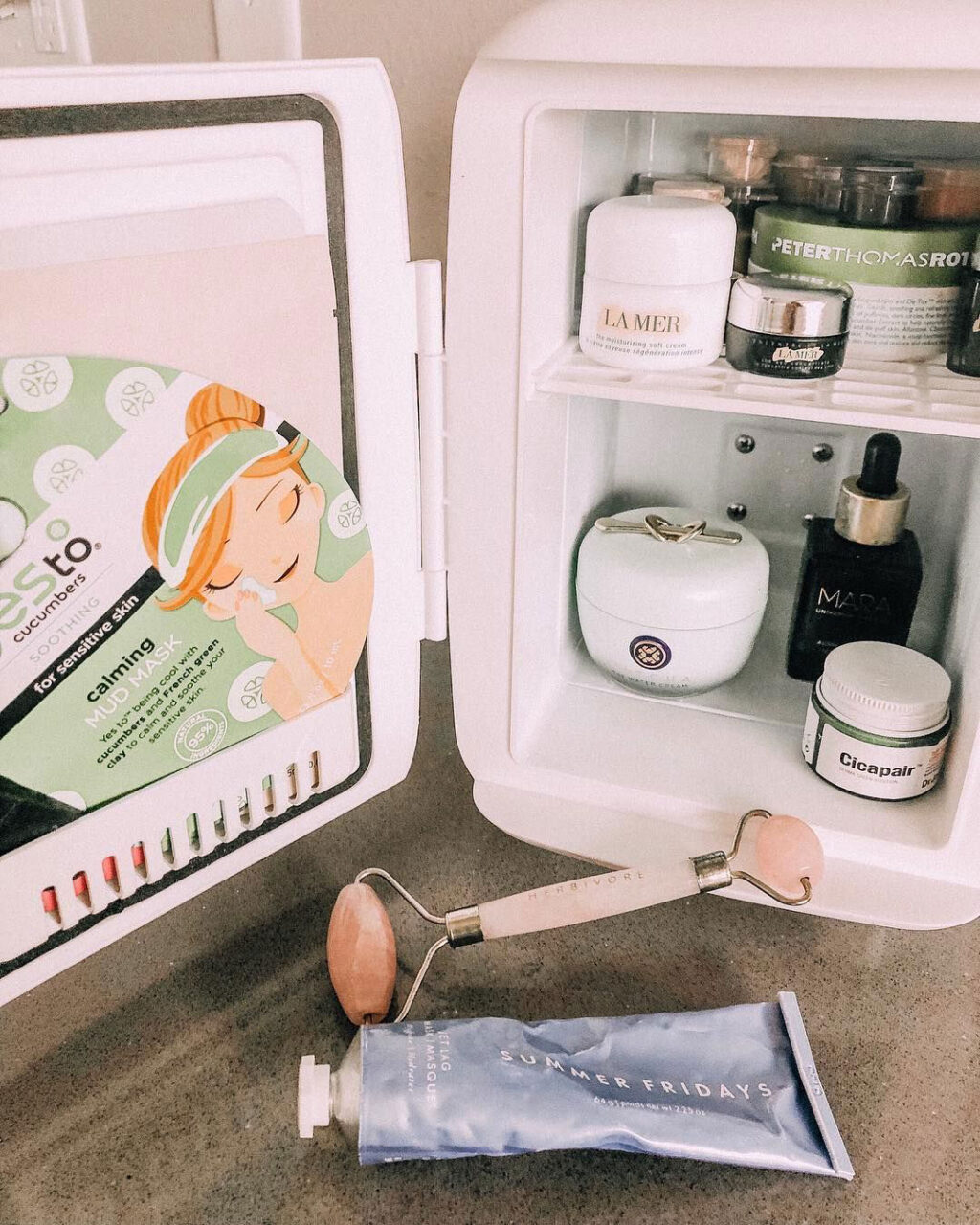Looking for skincare can be daunting since there are so many products out there on the market. From cleansers to moisturizers, what is the formula to the perfect routine? I’ve got you covered.
Before you walk to the skincare aisle, you need to make sure you know which skin type you have. You either have sensitive skin, normal skin, oily skin, combination skin, or dry skin. If you haven’t read my first article on the basics of skincare, here is a quick rundown:
- Sensitive skin gets red more easily and may react to products with harsh ingredients more than other skin types
- Normal skin isn’t too oily or too dry with a regular texture
- Combination skin has an oily T-zone while other parts of the skin may be normal or dry
- Dry skin can be flakey with a rougher texture than the other skin types
- Oily skin has a greasy appearance with enlarged and or congested pores
Sunscreen
Regardless of any skin type, the bare minimum of a skincare routine should consist of an everyday sunscreen with SPF 15 and higher.
On the most scientific approach to why sunscreen is so imperative, UV radiation is something that is best to be avoided. Despite the earth’s atmosphere absorbing a good amount of UV radiation, the sunlight still produces two types of rays that reach our skin: UVA (ultraviolet A) and UBA (ultraviolet B). Since UVA rays penetrate deep into our skin, it can speed up the aging process of your skin by damaging elastin and collagen production. Just because UVB rays hit our skin at more of a surface level, it doesn’t make them any less dangerous. These are strong wavelengths that cause sunburns, redness, and in serious cases when it damages DNA, skin cancer. It is safe to say that the combination of these two sun rays can be pretty dangerous.
I am not saying that you should avoid sunlight at all costs since sunlight is also vital for our overall health. It is simply important to acknowledge how it can affect skin if we do not protect it. UV rays are harmful to the skin whether or not it is cloudy. A common misconception is that people don’t need SPF if they aren’t planning on going outside, which is far from the truth. Even if you are staying inside all day, UV rays can still reach your skin through the windows; unless you have blackout curtains everywhere. So why does it matter? Skipping sunscreen can cause problems on your skin in the long run. Skin treatments such as retnoids and chemical peels can make your skin more sensitive to the sun. If you were to skip sunscreen, your skin would be more prone to harm from the sun and you’d be reversing the initial positive effect of these skin treatments. In addition to this, products that help with fine lines, wrinkles, and dark spots can be put off longer if you start wearing sunscreen more often in the day time. This is ideally the last step of your morning skincare routine.
Cleanser
This is the first step for both morning and night time routines because it would not make sense to put skincare products on dirty skin. There are two types of cleansing꞉ water based cleansing and oil based cleansing. When you use an oil based cleanser, it is usually followed by a water cleanser to get rid of all the dirt the oil has gotten off your skin. This method is known as double cleansing, which is a technique that originated from Asian skincare. It helps remove the oil and dirt from your skin with more efficiency since oil dissolves oil. Whether or not you decide to try a double cleansing system, incorporating a cleanser into your routine is extremely important. Cleansers that include micro beads or rough exfoliating particles such as walnut shells should be avoided because they can damage your skin overtime and weaken your skin barrier by causing micro tears. To cleanse your face, wash it with lukewarm water and softly spread the cleanser onto your face in circular motions. Always look for cleansers that include ingredients that target your skin concerns.
Masks
Although it is important to get that TLC, masks are not something you need to prioritize in your routine. If you are using a sheet mask, use it between your toners/essences and serums. If you are using a mask that needs to be applied by hand, cleanse your face after you are done and continue onto toners/essences. If you are using an overnight sleeping mask, put it on your skin as the final step in your routine.
Toners/essences
Compared to cleansers and sunscreen, toners and essences are more optional. Used both day and/or night, toners and essences are applied after cleansing the face. Toners serve as a way to get rid of any excess dirt your cleanser may have missed. It can be beneficial to have toner in your routine but it isn’t completely necessary, depending on what type of toner it is. Although essences do help your skin in terms of moisture, they aren’t essential (did you see what I just did there?). A ten step routine isn’t for everyone, which is understandable since it might not be the best idea to spend five minutes putting on serums and essences after waking up with ten minutes to get ready. Essences serve as an extra step to help brighten dull complexions.
Serums
Serums are applied after cleansing the skin and adding toners or essences. If you plan on applying more than one serum, the key to layering them is going in order of thickness. Lightweight serums that feel more like water go on first before applying the serums that feel more thick, meaning that the thicker serums might take longer to absorb into the skin. Remember, you want your routine to be simple, meaning that the number of serums you use in a single daily/nightly routine should be limited to the maximum of two or three. If you have more than that, make sure to rotate which days or nights you use them on to mimimize irritation. You should also make sure that the ingredients in your serums don’t irritate or contradict each other for better results.
Moisterizers
After all these steps, moisterizer is one of the last steps you need. People with oily or combination skin tend to shy away from moisterizer because they are afraid it would make it more shiny, which is not the case. Moisterizing your skin plays a huge role in the overall health of your skin. When you overstrip your skin with harsh ingredients, they can do more damage than good since you are technically getting rid of the natural oils on your skin. If you have oily skin, this might cause your skin to produce even more oil to make up for over drying your skin. You need to balance everything out with a moisterizer so it isn’t too dry or too oily. All skin types need a good moisterizer but there are different types for each one. Drier skin types need thicker formulated moisterizers while oilier skin types need a thinner formula. If you want to add an eye cream into your routine, be sure to put it on before your moisterizer.
Oils
The main purpose of a facial oil is to create a protective barrier between dry air and the moisture on your skin, locking in everything you just put on your face so that it has less of a chance at evaporating into the air. You can definitely mix a few drops of oil into moisturizer during your night time routine but don’t put oil on before moisterizer. If you put on an oil before moisterizer, the moisterizer will not get into your skin since the oil would create a barrier between the skin and moisterizer.
By: Vanessa Wu
You may also like
-
Cupid Talks About New Line Dancing Social Media Era & Teases Upcoming Music Collabs
-
Reporter Hannah Fletcher On Hosting Her Own Talk Show And Meeting One Of Her Heroes
-
Charlie Rogers Talks About Mental Health And New Single ‘Missed Call (Acoustic Version)’
-
Quill Talks About Finding Her Voice Through Music And Enchanting Her New Single ‘Ghosts’
-
Avery Lynch Talks About Celebrating Her Wins, Performing Live, And Her New Single ‘Rain’


Wow, I never knew this much about skincare. My skincare routine is basically just when I bath and then apply cream to my face (which is very seldom by the way). I don’t even know what skin type I have (I feel like it’s normal, but can get oily at times too🤔🤔). However, I found this article really helpful, I learnt so much so thanks for this.